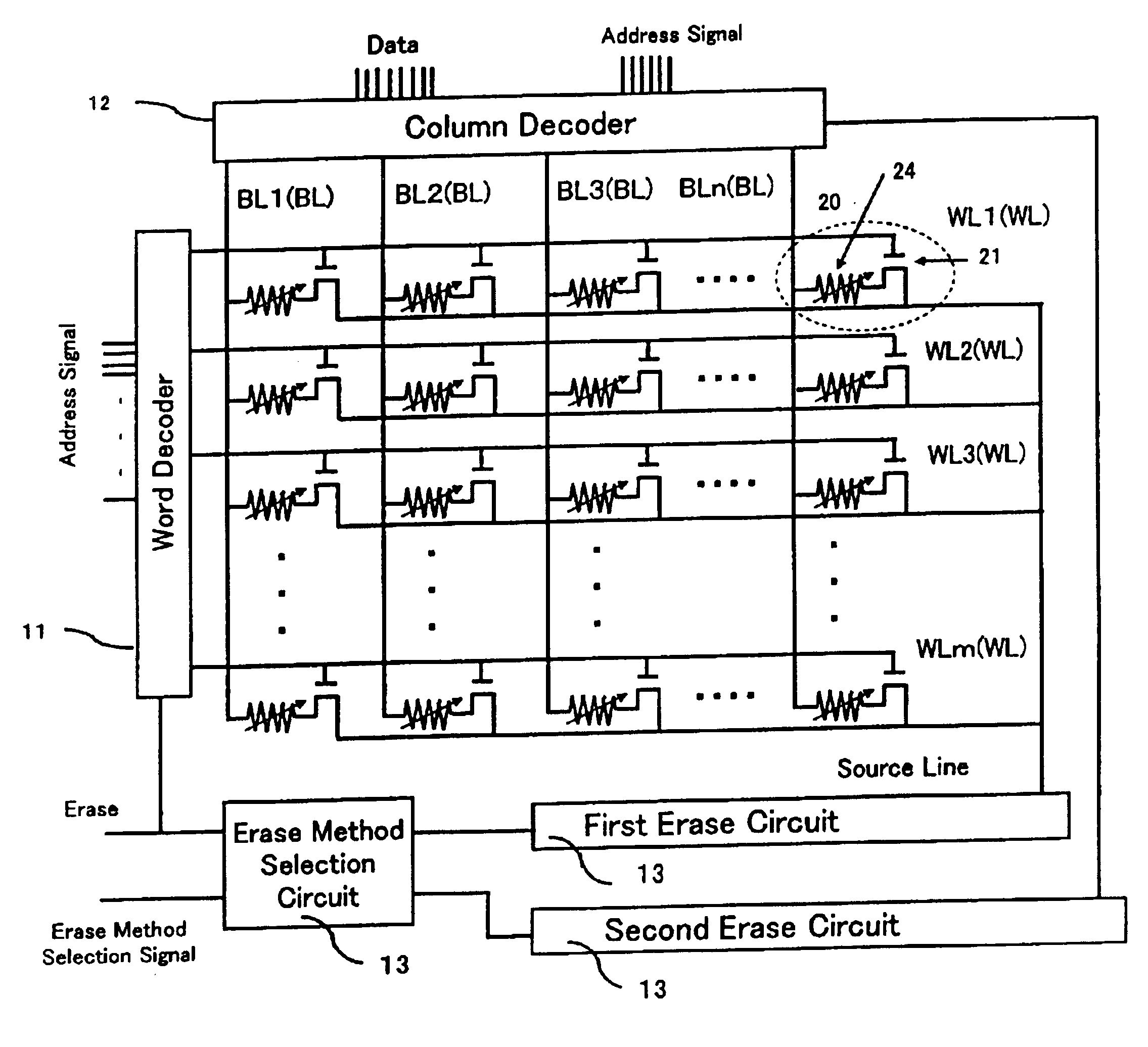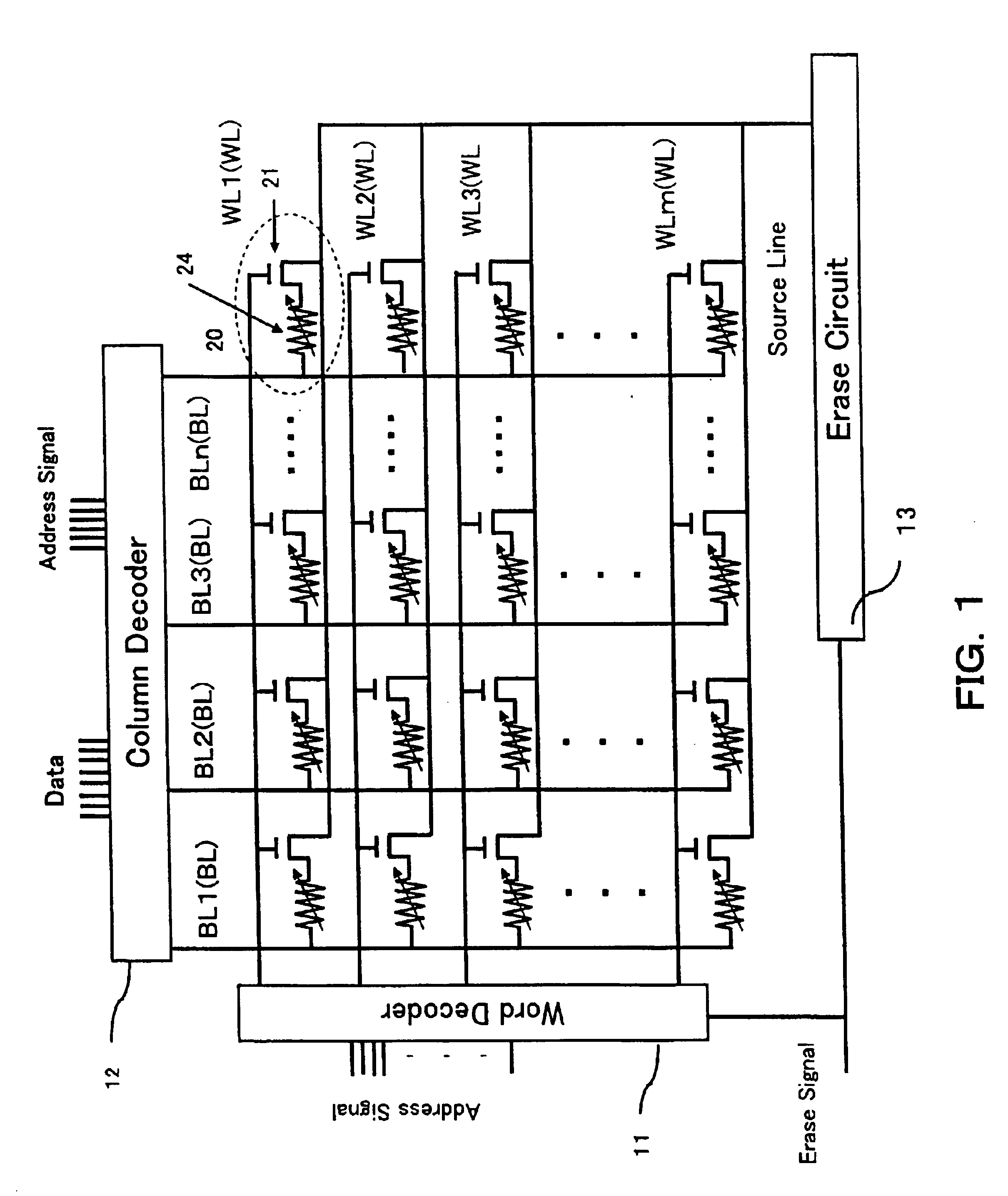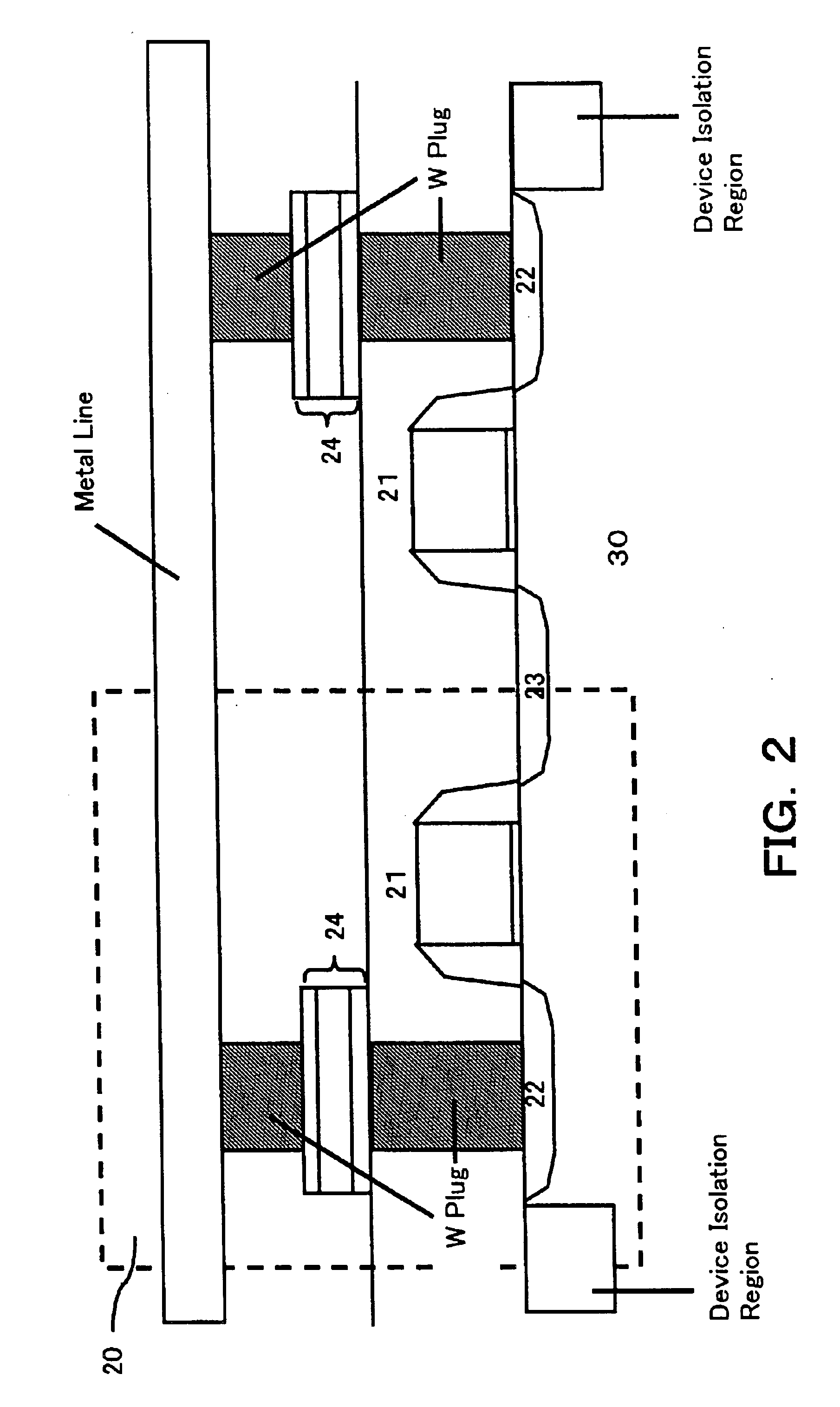Semiconductor memory device and erase method for memory array
a memory array and memory technology, applied in semiconductor devices, digital storage, instruments, etc., can solve the problems of deterioration of reliability, source voltage cannot be increased higher, erase speed cannot be enhanced, etc., and achieve the effect of reducing non-uniformity
- Summary
- Abstract
- Description
- Claims
- Application Information
AI Technical Summary
Benefits of technology
Problems solved by technology
Method used
Image
Examples
Embodiment Construction
[0041]Embodiments of a semiconductor memory device and an erase method for a memory cell array according to the present invention will be described with reference to the accompanying drawings.
[0042]Referring to FIG. 1, the semiconductor memory device of the present invention has a single or a plurality of memory cell arrays each configured as described hereunder. A plurality of nonvolatile memory cells 20 are arranged in each of a row direction and column direction, and a plurality of word lines WL1, . . . , WLm and a plurality of bit lines BL1, . . . , BLn are arranged in each of the row direction and column direction to select a predetermined memory cell or predetermined memory cells from the plurality of memory cells 20.
[0043]The memory cells 20 are arranged as follows. One end sides of variable resistor elements 24 for storing information by using variations in electric resistance are connected to drains of selection transistors 21. In the memory cell array, the other end sides ...
PUM
 Login to View More
Login to View More Abstract
Description
Claims
Application Information
 Login to View More
Login to View More - R&D
- Intellectual Property
- Life Sciences
- Materials
- Tech Scout
- Unparalleled Data Quality
- Higher Quality Content
- 60% Fewer Hallucinations
Browse by: Latest US Patents, China's latest patents, Technical Efficacy Thesaurus, Application Domain, Technology Topic, Popular Technical Reports.
© 2025 PatSnap. All rights reserved.Legal|Privacy policy|Modern Slavery Act Transparency Statement|Sitemap|About US| Contact US: help@patsnap.com



